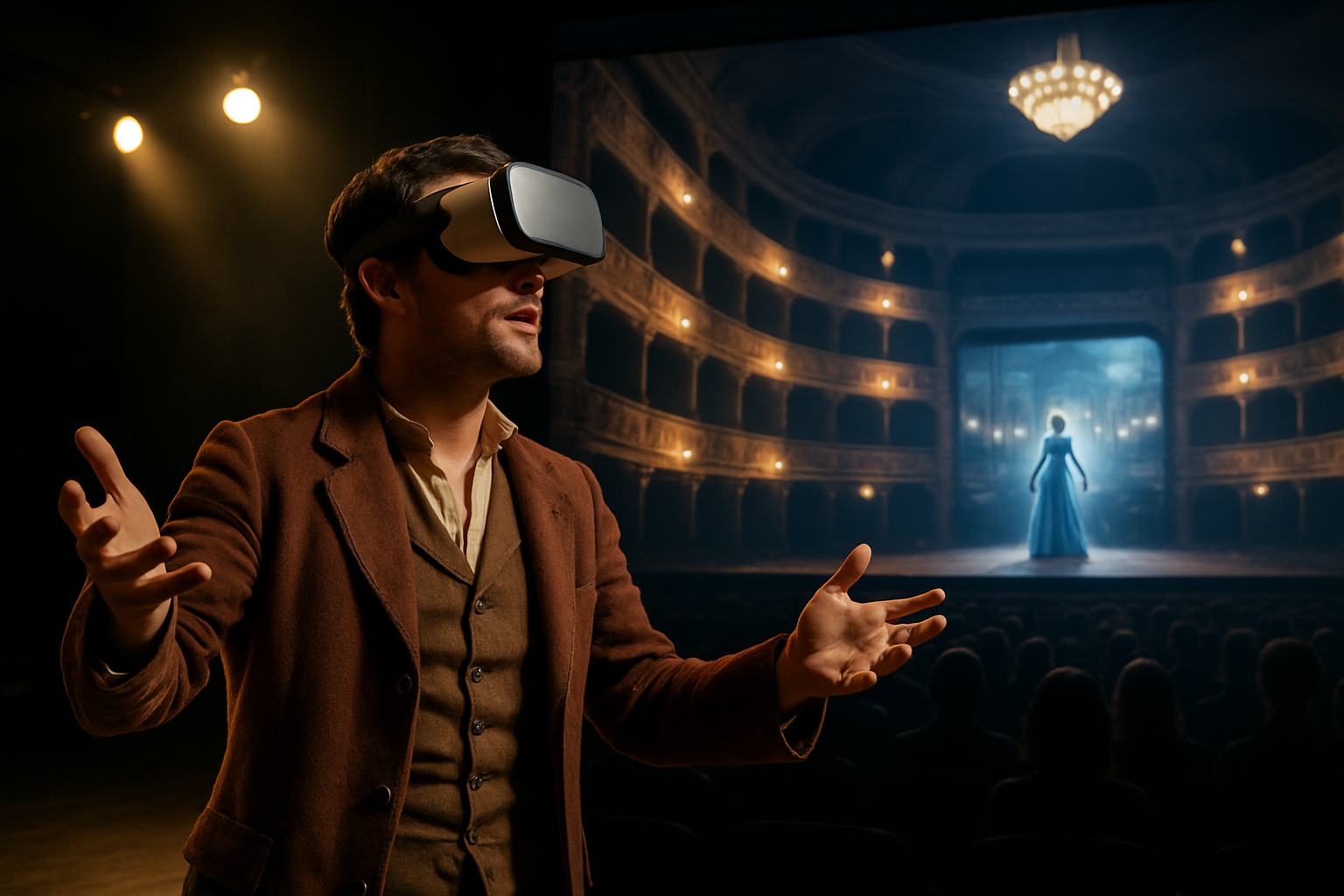Virtual Reality Opera: Redefining the Boundaries of Musical Theater
In the ever-evolving landscape of performing arts, a groundbreaking fusion of technology and classical music is captivating audiences worldwide. Virtual Reality (VR) opera, a cutting-edge artistic medium, is pushing the boundaries of traditional operatic performances and redefining the way we experience this centuries-old art form. This innovative approach combines the power of immersive technology with the emotional depth of opera, creating a unique and transformative experience for viewers. As VR opera gains momentum, it's not just changing how we consume music and theater—it's revolutionizing the very essence of storytelling in the digital age.

One of the first notable VR opera productions was Welsh National Opera’s Magic Butterfly in 2017, which allowed users to step inside two classic operas: Madame Butterfly and The Magic Flute. This groundbreaking project demonstrated the potential of VR to transport audiences into the heart of operatic narratives, offering a level of engagement previously unattainable in traditional theater settings.
Technological Innovations Driving VR Opera
The development of VR opera has been fueled by significant advancements in virtual reality technology. High-resolution displays, improved motion tracking, and more powerful processors have all contributed to creating more realistic and immersive virtual environments. Spatial audio technologies have been particularly crucial, allowing for the creation of three-dimensional soundscapes that enhance the operatic experience.
Moreover, the integration of haptic feedback systems has added a new dimension to VR opera, enabling audiences to feel the vibrations of music and the presence of virtual performers. This multisensory approach creates a deeply engaging experience that blurs the line between the virtual and physical worlds.
Reimagining Operatic Storytelling
VR opera is not merely about translating traditional performances into a virtual space; it’s about reimagining the very nature of operatic storytelling. Composers and directors working in this medium are exploring new narrative possibilities that were previously unthinkable in conventional opera houses.
For instance, some VR operas allow viewers to experience the story from multiple perspectives, choosing to follow different characters or even inhabit their roles. This interactive element adds layers of complexity to the storytelling, encouraging repeated viewings and deeper engagement with the material.
Expanding Accessibility and Audience Reach
One of the most significant impacts of VR opera is its potential to democratize access to this historically elite art form. By removing the physical constraints of traditional opera houses, VR productions can reach audiences anywhere in the world, breaking down geographical and economic barriers.
This expanded accessibility is not only bringing opera to new audiences but also allowing for more diverse and experimental productions that might not find a place in conventional venues. As a result, VR opera is fostering a new generation of opera enthusiasts and creators, diversifying the art form’s audience and creative pool.
Challenges and Future Prospects
Despite its promising potential, VR opera faces several challenges. The cost of producing high-quality VR content remains high, and the technology required to experience these performances is not yet widely accessible. Additionally, some purists argue that the virtual experience cannot replicate the communal aspect and live energy of traditional opera performances.
However, as technology continues to evolve and become more affordable, these barriers are likely to diminish. The future of VR opera looks bright, with potential developments including AI-generated performances, real-time collaborative virtual productions, and even more immersive sensory experiences.
As we stand on the cusp of this new era in operatic performance, it’s clear that VR opera is more than just a technological gimmick—it’s a powerful new medium for artistic expression that has the potential to revitalize and reimagine one of the world’s oldest performing arts. By embracing the possibilities of virtual reality, opera is not only preserving its legacy but also ensuring its relevance in the digital age, captivating new audiences and inspiring the next generation of artists and innovators.





